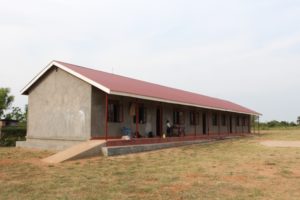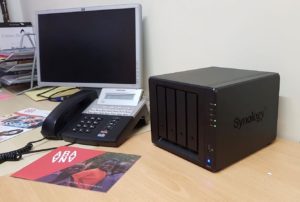Case Study – How Toshiba is supporting Secure and Reliable Data Storage for a Ugandan Children’s Charity
Supporting Secure and Reliable Data Storage for a Ugandan Children’s Charity
Many of us are lucky enough to have had access to free education, benefiting from that on a daily basis as we pursue our careers and follow our dreams. But large portions of the world’s citizens lack any access to education at all. If it is available, it often has a price tag associated with it. Families are faced with a choice; not whether to send the children to school, but which of their children to send.
The charity Abaana was set up in 1998 with its chosen name meaning “children” in one of the languages of the nation of Uganda, East Africa. With around two million children not attending school at all, and a further five million in schools that are housed in little more than temporary structures, one of the charity’s core focus areas is improving education by building schools.
Each school project starts with the educational environment. As an example, the Arise & Shine Primary School in Pallisa, East Uganda, previously shared a building with a local church. This was described as looking more like an air raid shelter than a building for education. Thanks to an investment of £40,000, the local children now have access to a dedicated facility. The building, made of concrete, is designed not only to meet local government standards but also to exceed them. Hygiene is another aspect of each school project, with proper sanitation and wells for clean and safe water being installed too. These are supported through separately funded Water Projects.

Figure 2 – The latest school built by Abaana in East Uganda awaiting the final stage of completion – a coat of paint.
An important part of the Abaana’s work is keeping donors updated on the projects they have invested in. As a result, the team’s staff in Uganda need to access a growing library of stories, visual material and presentations. Due to infrastructure limitations, a pure cloud approach that makes data accessible on the move is not a viable approach. A further challenge has been the growth in file sizes as images of ever higher resolution have been added to the library, making download times, when possible, even longer. With the team operating thanks to charitable contributions and volunteers, the organization needed a data storage solution that was easy to maintain and administer without a dedicated professional IT team.
The existing solution consisted of an aging Windows desktop computer coupled with a combination of cloud services to provide both local and off-site access to data. However, without an IT professional available to administer the setup, providing logins and setting up file shares was a constant challenge that took valuable time away from other more important tasks. On top, the desktop machine required its own mouse, screen and keyboard in an already cramped office, and was power hungry and noisy.
Having reviewed various approaches, it was decided to invest in a network-attached storage (NAS) platform. The Synology range of NAS solutions seemed to be an ideal fit. Their power consumption was low and the volume of the housing was more suited to the space available. Furthermore, the entire platform could be administered via a web interface, either locally or, when required, remotely. The solutions broad range of free apps also ensured that a range of capabilities and services could be added when required to meet changing demands and requirements.
The device chosen was a quad core DS418 with four bays suited for use with both 3.5” and 2.5” SATA drives. Storage for the system was donated by Toshiba Electronics Europe GmbH in the form of four 3.5” 4 TB N300 NAS Hard Drives (N300). Designed for the specific workloads and challenges of NAS systems, the N300 is a high reliability solution targeting 24/7 operation. Backed up by a three-year limited warranty this model can comfortably attain 180 TB/year workloads. An integrated 128 MB buffer helps to optimize data accesses, even when multiple users are accessing the storage in a RAID configuration. They also integrate multiple RV sensors whose data is used to compensate for rotational vibrations that could cause knock-on vibration in other close proximity drives, such as those found in the multi-bay configuration of the DS418.

Figure 3 – The new RAID storage, featuring four 4 TB N300 NAS HDDs from Toshiba, takes pride of place in the Abaana charity’s office.
The Abaana team now not only owns a highly reliable, low power consumption, compact storage solution, but also benefits from a range of features that had not previously been considered. The RAID implementation especially has provided much needed peace-of-mind, ensuring that their valuable data is secure and business continuity is assured, while simultaneously quadrupled their available storage capacity. With the cloud-based login capability, there is also no need to spend time setting-up and administering VPN logins for users. “The old server setup generated a lot of noise due to the operation of the cooling fan,” said Scott Baxter, CEO of Abaana. “In our new NAS RAID solution, the Toshiba drives are incredibly silent when spinning, making the DS418 effectively a ‘silent’ device when it is active.”
